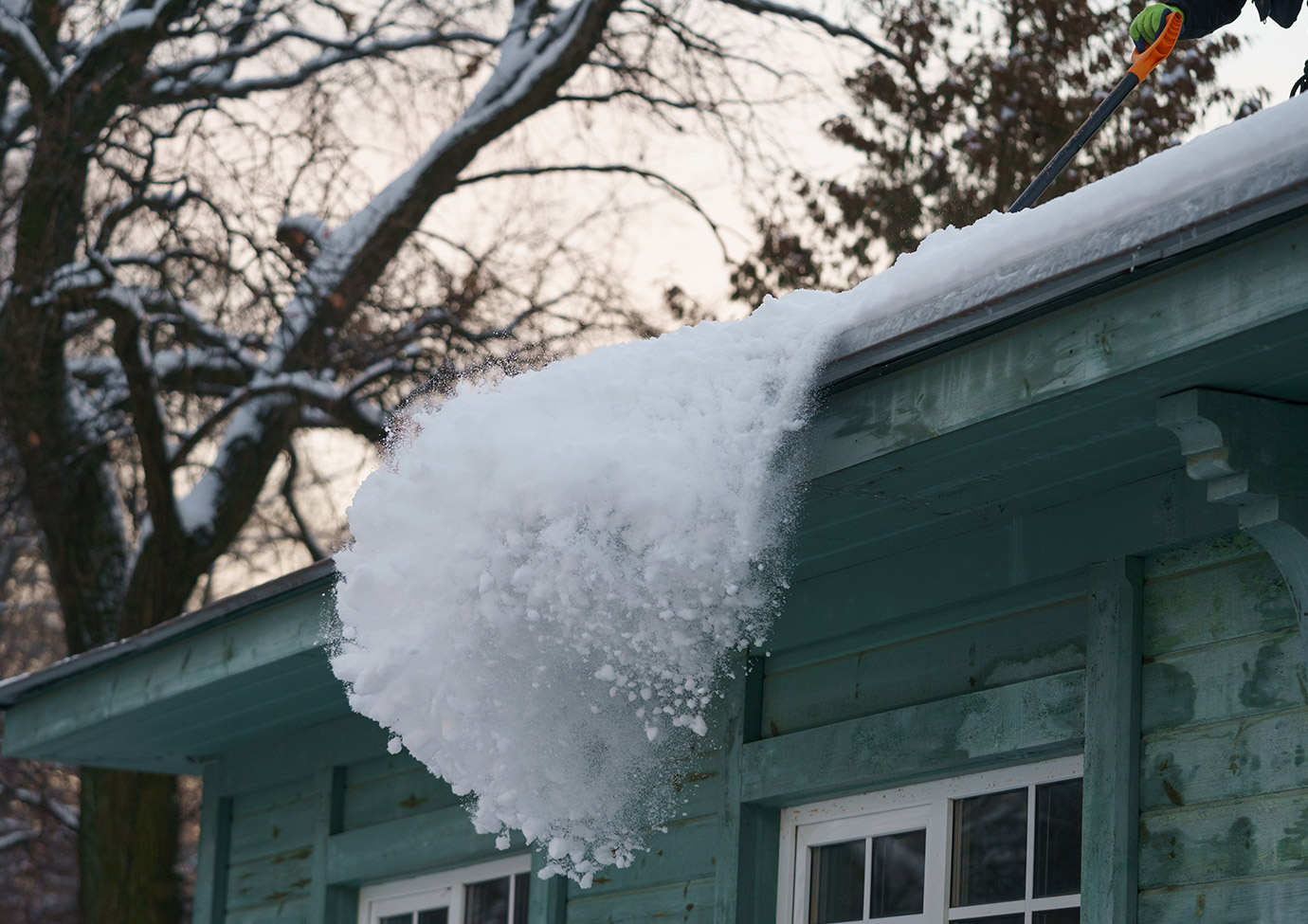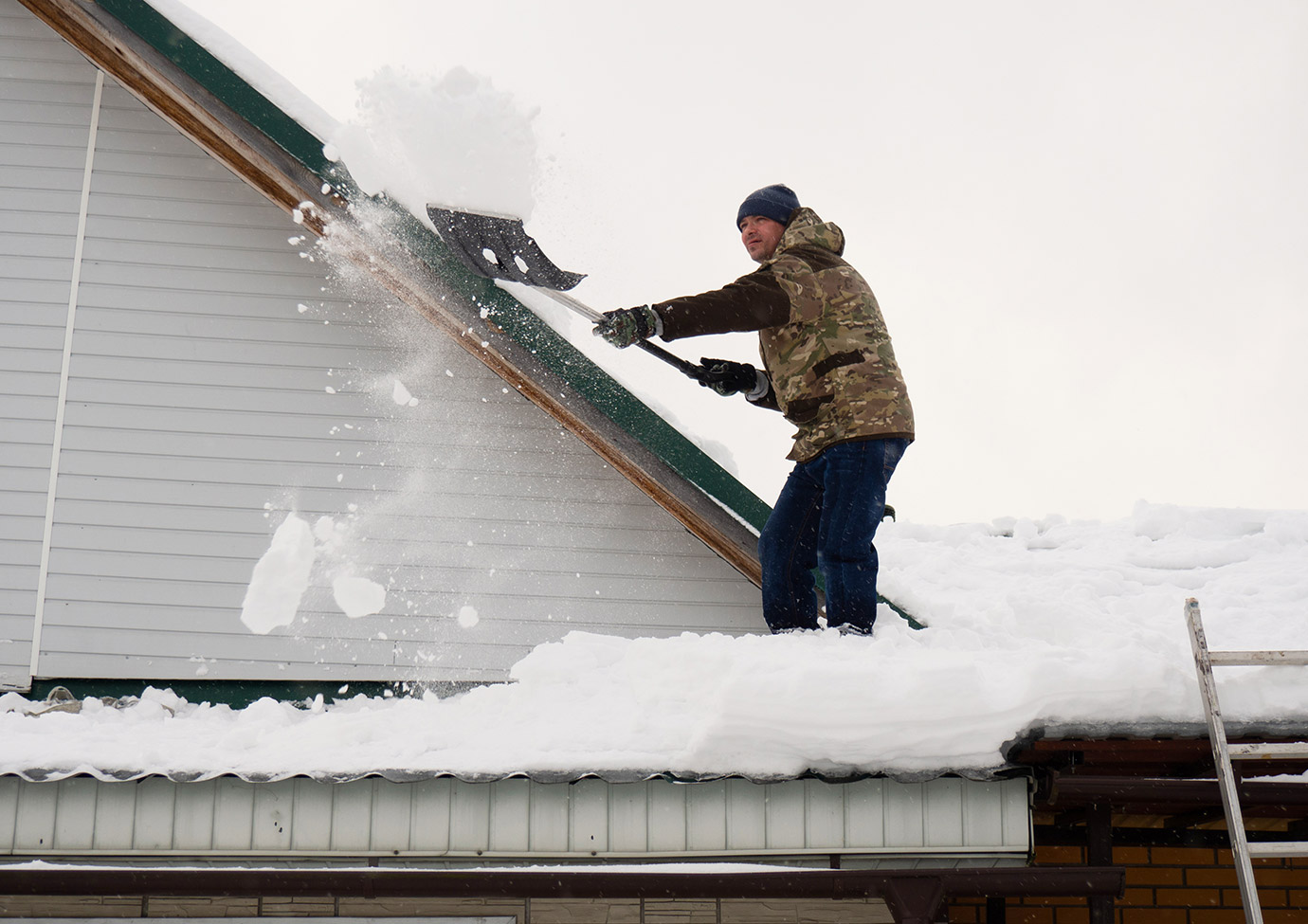Top 10 Tips for Safe and Effective Roof Snow Removal from Your Roof
Posted by SnoBlox-Snojax on Nov 3rd 2022
It's that time of year again - the snow is about to start falling and it's time to start thinking about how to remove it from your roof safely. If you don't take the necessary precautions, you could end up with a collapsed roof, a crushed car, or even injuries to yourself, your family, or your pets so it's important to be aware of the risks involved when it comes to snow on your roof. In this blog post, we will discuss the top 10 tips for safe and effective roof snow removal.
Tips For Removal Of Snow On Roof Tops
When it comes to roof snow removal, there are a few things you need to take into account in order to do it safely. Here are some tips:
1. Get the right equipment
First of all, make sure you have the right equipment for roof snow removal. A regular shovel will not suffice – you will need a roof rake or another type of tool that is specifically designed to remove snow from your roof.
2. Beware of ice dams.
An ice dam is a ridge of ice that forms at the edge of the roof and can cause water to back up and seep into the home. If you suspect there is an ice dam, do not try to remove it yourself – call a professional in snow removal to help you out.
3. Be careful of slippery surfaces.
When removing snow from the roof, be aware that the surface may be slippery. Use caution and take your time to avoid injury. It's best to use fall protection equipment like roof anchors, harnesses, and lanyards to remove snow safely from your roof.
Imag
4. Start at the edge of the roof
When removing snow from a roof, it's important to start at the edge and work your way down. This will help prevent the weight of the snow from damaging the shingles or causing the roof to collapse. Snow removal from the edge of the roof is also easier since you won't be moving large amounts of snow at once.
5. Use caution when removing icicles
Icicles may look pretty when hanging from your roof, but they can be dangerous. They can fall and injure people or animals, so it's important to be careful when removing them. Use a ladder if necessary, and never stand directly underneath an icicle while you are removing it. Snow and ice can be a major pain even though it does look beautiful and is fun to play in.
6. Don't forget about the gutters
In addition to the removal of snow on the roof, don't forget to clear the gutters as well. Clogged gutters can cause water to back up and form ice dams that damage the roof or even cause the gutters to pull away from the house. You can protect your gutters by using gutter guards to keep them clear of snow and ice.
7. Know when to call a professional
There are some instances where it's best to call a professional for roof snow removal. If you are unsure of how to safely remove snow from your roof, if you have massive ice dams, or if the job is too big for you to handle, it's always best to err on the side of caution and call a professional.
8.Install snow guards
If you live in an area that gets a lot of snow, you may want to consider installing snow guards. Snow guards are devices that attach to the roof and help prevent the snow from sliding off in one big sheet. This can help protect people and property below, as well as your roof.

9. Be prepared
Before the snow starts to fall, make sure you have a plan in place for snow removal. This will help to ensure that you are ready to tackle the job when it's time and that the job is done safely and efficiently.
10. Stay safe
Above all else, the most important thing is to stay safe. If you are unsure of how to remove snow from your roof safely, or if the job is too big for you, call a professional.
If you follow these tips, you'll be well on your way to removing snow from your roof safely and effectively. Just remember to take your time, use caution, and be prepared.
What Not To Do Or Use When Removing Snow And Ice
Using De-Icer On Your Roof
It's a bad idea to have salt on your roof. While this is an excellent product to melt snow, it can damage your roof and gutter because it has corrosive properties. Choose an alternative noncorrosive “de-icing” product. You can purchase a range of de-icer products from most hardware stores.
Spraying Hot Water
You should never spray hot water on your roof to remove the snow. The sudden change in temperature can cause your shingles to crack or break. It is also a fire hazard.
Hitting The Roof With A Shovel
Beating the snow off your roof with a shovel can damage the shingles and cause water to seep in through the cracks. Use a broom instead to brush the snow off gently.
Climbing On The Roof
Unless you have the proper safety equipment, you should never climb on your roof to remove the snow. You could fall and seriously injure yourself.
When Should I Remove Snow From My Roof?
It's generally best to remove snow as soon as possible after it falls. The longer it stays on your roof, the more likely it is to cause damage. You should remove snow from your roof every time it snows. This will help to prevent any damage that could be caused by the weight of the snow or by the formation of ice dams.
You may want to consider removing snow from your roof if:
- There are more than 6 inches of snow on your home or business roof
- The snow has been on your roof for more than 48 hours
- You live in an area with a lot of wind, as this can cause the snow to shift and put pressure on different parts of your roof
- You live in an area with a lot of sun, as the sun can cause the snow to melt and refreeze, which can damage your roof
- You have ice dams or icicles forming on your roof
- You see any cracks or damage to your shingles
If any of these things are happening, it's best to remove the snow from your roof to prevent further damage.
How Do I Remove Snow From My Roof?
There are a few different methods that you can use to remove snow from your roof. You can use a roof rake, a long-handled brush, or a snow removal tool.
If you decide to use a roof rake, be careful not to damage your shingles. Start at the edge of your roof and work your way up, raking the snow off in small sections.
If you're using a long-handled brush, start at the bottom of your roof and work your way up, brushing the snow off in small sections.
If you're using a snow removal tool, be sure to follow the manufacturer's instructions carefully. Some tools can damage your roof if used improperly.
Once you've removed the snow from your roof, you can use a garden hose to spray down any remaining snow and ice. Doing so will help to prevent the formation of ice dams and blocked gutters.
You should also clear any snow and ice from your gutters, as this can cause them to overflow and damage your roof. To do this, you can use a garden hose, a long-handled brush, or a gutter scoop.
Signs Of Too Much Snow Load On Your Roof
If you see any of these signs, it means that there is too much snow on your roof and you need to remove it immediately:
- Sagging or drooping in the middle of your roof
- Cracks or breaks in your shingles
- Ice dams forming in your gutters
- Icicles hanging from your roof
- Water leaking into your home
If you see any of these signs, call a professional roofing contractor to have the snow removed from your roof. Do not attempt to remove the snow yourself, as this could be dangerous.
These are the top 10 tips for safe and effective snow removal from your roof. By following these tips, you can help to prevent damage to your roof and keep your home safe.
If you have any questions about snow removal or if you need help removing the snow from your roof, call a professional roofing contractor today.

